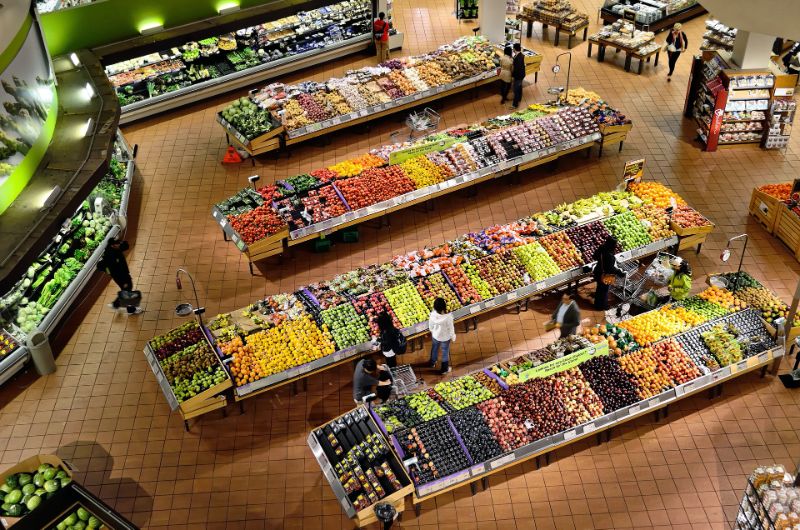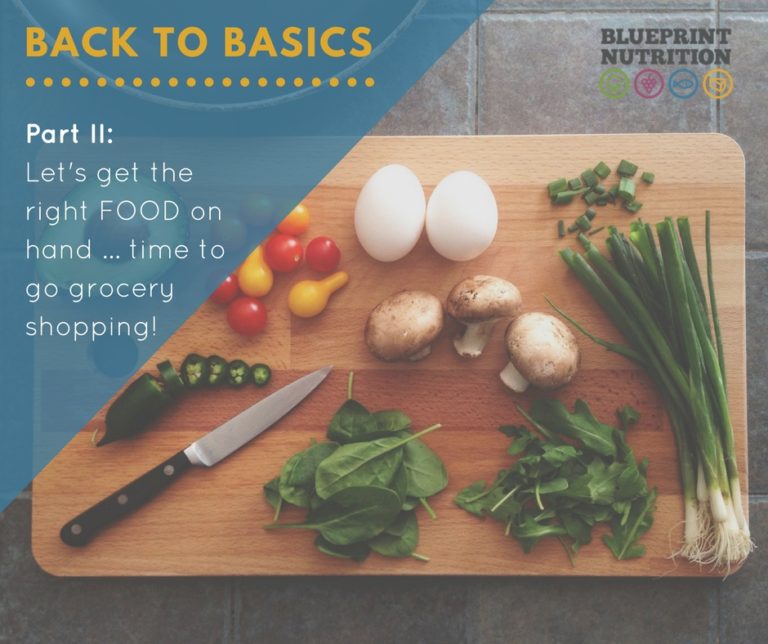Last week we talked about having the right tools in your kitchen so that you can cook healthy, easy, stress-free meals. This week’s blog is going to talk about having the right FOOD on hand after grocery shopping, because if our cupboards are stocked with things that are generally healthy, then we are automatically setting ourselves up for success. I know that I personally would be hard pressed to eat a healthy diet if the foods weren’t in my house. And I’ll admit, I am too lazy to get in the car and drive anywhere to satisfy a craving once the kids are in bed!
With no further adieu, here are 3 simple steps to get healthy foods in your kitchen (and ultimately, in your belly!)
Step 1: Decide which foods stay and which ones go?
Does anyone remember watching Survivor, the late ’90s made-for-TV competition where contestants are dropped in an isolated location and must provide the essentials of life (food, water, fire and shelter) for themselves? Then one-by-one they are voted off the island and sent home until the sole survivor is left and takes home the cash?
Well, all that to say, you need to decide which foods get to stay in your kitchen and which foods should be “voted off the island”.
More practically speaking, you need to ask yourself this important question:
“Does this food move me towards my goal(s) or will it move me farther away?”
A few more things to think about as you move through each area:
a) The Pantry:
Are there any ‘white’ carbohydrate foods that can be replaced with whole grain alternatives? This is an easy way to get more fibre into your diet … which reaps many rewards for your health! Not keen on the taste of whole grain pasta or brown rice? Cook half white and half whole grain to start and gradually replace from there.
In general, is your pantry filled with whole foods or are there more processed foods? In other words, is there one word on the ingredient list (i.e. lentils) or are there 10+ words (i.e. Mac ‘n Cheese Dinner)
Pantry stock suggestions:
- Whole grain pasta and rice, rolled oats, bags of lentils/dried beans, canned lentils/beans, dried fruits, whole grain crackers, high fibre/low sugar cereal, baking ingredients, spices/seasonings, healthy cooking oils, vinegars, canned fish, canned fruits/vegetables, tomato sauce/paste, low-sodium broth, etc.
b) The Junk Drawer:
Do you find yourself mindlessly eating sweet or salty “junk” foods in the evening? If it’s hard to have these on hand and enjoy in moderation, then it’s best to keep them out of the house while you are trying to establish some new healthy habits.
What to keep on hand for a snack-attack:
- Pre-portioned containers with a seed/nut/dried fruit mix of choice (about the size of the palm of your hand)

c) The Refrigerator:
Are there any foods in your fridge that have a lot of added sugar, fat or salt? Is the meat drawer filled with processed meats? Do you have a lot of juice on hand? Again, nobody is perfect, but you want to see that your fridge is filled mostly with whole foods, not processed foods and condiments.
Refrigerator stock suggestions:
- Pre-washed/ready-to-eat fresh fruits and vegetables, plain/unsweetened milk and milk-alternatives, lean meats, eggs, cheese, low-sodium/low-sugar condiments, nuts and seeds and whole grain/whole wheat flours (yes, these should be stored in the fridge or freezer)
d) The Freezer:
This can be a repository for high salt and high sugar foods like frozen pizzas, frozen TV dinners, French fries, ice cream and other frozen desserts. These are “every once in a while” foods; consider moving them on if they make it hard to stick to your goals.
Freezer stock suggestions:
- Frozen fruit and vegetables, herbs (freeze any extras that you have from a fresh bundle of herbs in ice cube trays), nuts and seeds, whole grain/whole wheat flours, lean cuts of meat etc.
- If you are able, try making homemade meals in advance and freezing them. It’s a great way to eat healthy even on hectic nights.
Step 2: Go Grocery Shopping

Admittedly, I have a love/hate relationship with grocery shopping. I love to shop when I am on my own, without kids and I have time to check out new products, compare products and just generally TAKE MY TIME! I strongly dislike shopping when it is INSANELY busy in the store and I am starving and have 10 minutes to grab everything before I am late to pick up the kids!
If grocery shopping isn’t your cup of tea, try switching up your usual grocery store if you can. Sometimes a new environment can provide some greatly needed inspiration.
Here are some tips to help you keep the foods in your cart on the healthier end of the spectrum, while still keeping the grocery bill as budget-friendly as possible.

For healthy shopping:
- Shop the perimeter of the store while grocery shopping. In doing so, you will hit up the fresh fruits and veggies, meat/fish/eggs, milk/alternatives, breads/wraps/pitas and the frozen fruits and vegetables.
- Shop the inner aisles minimally and only for items on your list or healthy pantry items.
- Get to know how to use the Nutrition Facts Panel to help you compare nutrients like sodium, sugar, fibre, fat. Get help here.
- Don’t be fooled by front of package labels! Just because something says it’s “fat-free” doesn’t mean it is a healthy choice! I once saw a bag of chips that said “cholesterol-free”. When have they EVER had cholesterol in them … sigh
- Limit your trips to bulk-buying stores where you find food in packages designed to feed an army. They may be healthy foods but research shows us that if you buy large packages of food, you will eat the food faster and in larger quantities. If you do this, try storing the extra quantities in the basement.
For budget-conscious shopping:
- Shop at discount grocery stores or those that will price match
- PRICE MATCH! If you don’t have it yet, get the free app called “FLIPP”. It saves me lots of money and makes it easy to keep a running grocery list on my phone. Check it out here.
- Buy fresh produce when in season and choose frozen (or canned) when out of season or the price of fresh is expensive
- Search high and low. More expensive items are typically at eye-level so put your plyometric jumping skills into action and jump up to the top of the shelf and squat down to the bottom to check out the full range of comparable food products.
- Stick to your grocery list while grocery shopping. Don’t be influenced by the end-of-the-row displays.
Step 3: Put your food away strategically after grocery shopping
Did you know that you are 3x more likely to eat the first food that you see?! Picture your kitchen cupboards at home right now or glance over and take a quick look. Is there a fruit bowl out on the counter? Or do you have a jar of candies beside the spice rack? Where we store our food is also very important if you want to make the healthy choice the easy and automatic choice!
Hide/put away the less healthy foods
- Take the bread and toaster off the counter – even just seeing the toaster can make you choose to eat bread vs. fruit
Make healthy items more visible:
- Put washed fruit in a fruit bowl on the counter and place pre-cut vegetables at eye-level in the refrigerator
The Nuts and Bolts:
- Make some decisions about what food is worth keeping around and what food should be moved on… this completely depends on your own personal goals for this year!
- Don’t be influenced by the psychological tactics employed by grocery stores! Shop the perimeter, stick to your list, look high and low and use price-matching apps to keep things budget-friendly.
- Keep healthy foods in plain sight in your kitchen and other less-healthy foods in the back!
As always, take it one bite at a time,
Rosanne
Here are links to the other blogs of this series:






